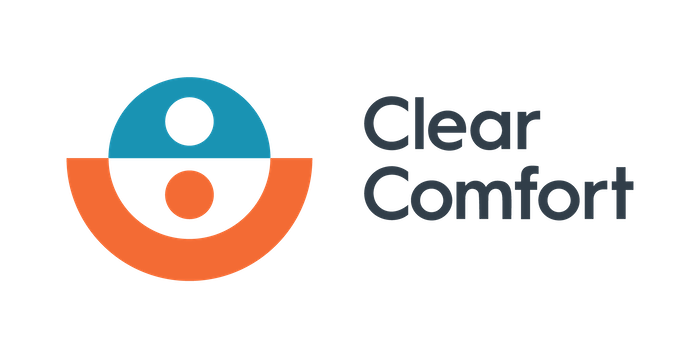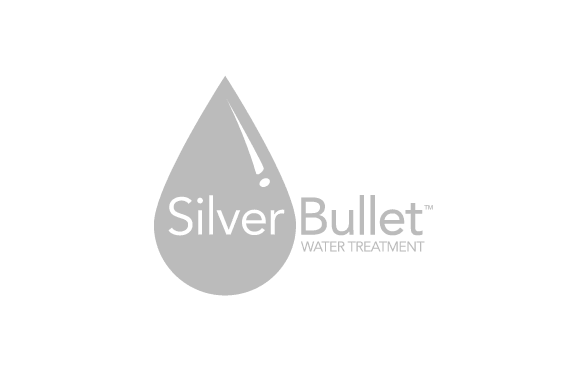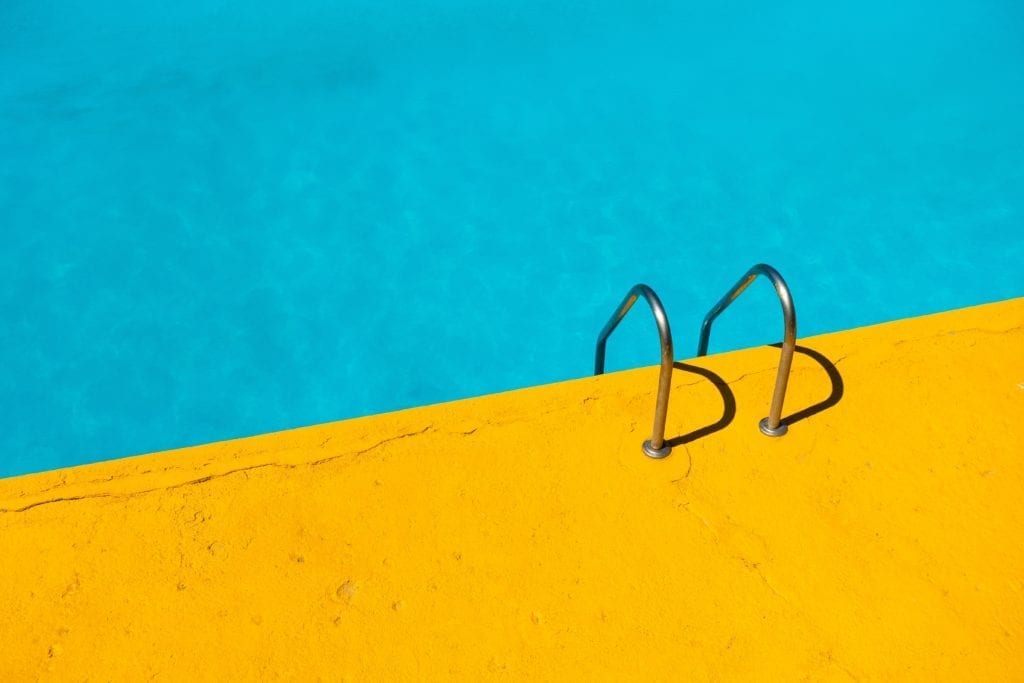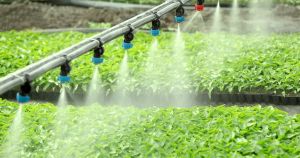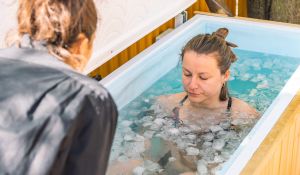Everyone loves the idea of a chemical-free pool. After all, swimming in chemicals does not sound like the best way to spend a summer day.
When a homeowner fantasizes about having a pool in their yard they are usually picturing clear, fresh water that they can dive into without worrying about the long-term health impacts of pool chemicals on their skin and lungs. For those who only eat organic and stay away from GMOs and BPAs, a chemical-free pool is the only kind of pool that seems worth having.
The Truth About Chemical-Free Pools
The reality is that a completely “chemical-free” pool does not exist, even in nature. Technically all matter, including human beings, is made up of chemicals.
When people use the term “chemical-free pool,” we can assume they are talking about added chemicals that are not naturally occurring. Even by this definition, a chemical-free pool is not realistic or even desirable.
Even from a health standpoint, it is simply not safe to operate a pool without some added “chemicals” to combat bacteria and contaminants in the water. A pool without chemicals is the perfect breeding ground for bacteria, viruses, and parasites.
Concentration is Important
Chemicals can be totally safe, or they can be fatally toxic. Even our drinking water contains chemicals such as liquid chlorine, fluorosilicic acid, aluminum sulfate, calcium hydroxide and sodium silicofluoride. What’s really important is not always which chemicals are in your water, but the concentration of those chemicals.
For example, tap water can have up to 4 ppm (parts per million) of chlorine, which is the maximum amount deemed safe by the EPA. Despite drinking all of these chemicals every day, we hardly notice the taste and rarely experience any negative effects from them. In fact, these chemicals are often the only thing preventing us from getting seriously ill. Chemicals are not the enemy – they can actually be our friend, as long as we use them intelligently and in moderation.
Residual Sanitizers are Necessary
Every pool requires a certain level of residual chemicals to be safe to swim in. Safety is much more important than the romantic idea of “chemical-free,” and should always be the first priority when it comes to maintaining a pool or spa.
Almost any (sane) person would prefer a pool with chemicals that are safe from harmful bacteria and contaminants rather than an unsafe pool without added chemicals. This is the reason chlorine has been so commonly used in pools for generations, and people wouldn’t use it if it weren’t necessary for safety.
Some companies will market their pool products as “chemical-free,” but those companies are either misleading the consumer or they are unsafe. The fact is, it is impossible to maintain safe pool water without at least some low-level residual of chlorine or another sanitizer.
The Dangers of an Untreated Pool
Many people will see pool water that is clear and assume it’s safe to swim in. Unfortunately, that is not always the case.
While organic growth, like algae, is easy to spot it’s the tiny, invisible microorganisms that pose the biggest threat to pool water safety. Bacteria, viruses and parasites can be present in pool water and are not always easy to detect. These can spread from person to person through inhalation, touching or swallowing, and can cause serious illness or in the worst cases, death.
Waterborne Illnesses
1. E-Coli
E-Coli is one of the most commonly known types of bacteria responsible for water-related illnesses. It lives in the digestive systems of humans and animals and is spread through fecal matter. Swallowing water contaminated with E-coli can cause diarrhea, fever and abdominal cramps.
2. Legionella
This bacteria thrives in warm water and is the cause of Legionnaires disease, which is a form of pneumonia. Legionella can spread through inhalation and can cause fever, abdominal pain, headaches and unhealthy weight loss.
3. Cryptosporidium parvum
Cryptosporidium, or Crypto, is a diarrheal parasite that lives in human and animal intestines and can survive for many days in water, even when that water is treated with chlorine. When Crypto is swallowed, it can cause diarrhea, cramps, fever and even death in worst cases.
4. Pseudomonas aeruginosa
Pseudomonas aeruginosa is spread through the air and can cause a rash, conjunctivitis, sore throat, nausea and other harmful symptoms.
Getting sick from pool water is not fun, and it can be enough to scare someone away from swimming for the rest of their life. It’s important to get ahead of the problem and take necessary precautions to make sure your pool water remains sanitary and free of nasty microorganisms such as these.
Waterborne Illnesses Prevention
In order to ensure that your pool is safe from any disease-causing microorganisms, it’s crucial to have an effective disinfection system that acts quickly.
Traditionally chlorine has played this role, and it’s a very powerful sanitizer, but even chlorine does not protect swimmers against some illnesses, such as Crypto. Chlorine can also cause irritation of the skin and eyes, damage to clothing and can lead to respiratory disorders, such as asthma. While some chlorine is necessary for safe pool water, it is possible to significantly reduce the amount of chlorine needed and eliminate many of the problems it causes, without compromising on safety.
A Pool That’s Safe For Kids
People with families might not want their children being exposed to chemicals in the pool. This is a legitimate concern, and studies have shown that pool chlorine increases the risk of bronchiolitis, a lung infection, for young children and infants.
On the other hand, kids are more likely to leave human waste and bacteria in pools, which leads to the spread of parasites and viruses. Making matters worse, children have weaker immune systems when it comes to fighting off viruses. This means it is even more essential to have a properly disinfected pool when you have small children.
When it comes to allowing toddlers to play in swimming pools, it seems like a catch-22. A pool that is not properly sanitized is unsafe, and a pool with too much chlorine, or more importantly chloramines, can also be dangerous. However, once again, it is not the chemical that is the problem, it is the concentration of a chemical that causes health problems.
Fortunately, today there are solutions that allow children to safely play in pools by lowering chemical concentration without sacrificing sanitation quality.
Supplemental Systems
For those looking for complete protection with the least amount of added chemicals and irritation, it is possible to combine a supplementary sanitation system with a trace amount of residual chlorine. Such systems include ozone, AOP (Advanced Oxidation Process) or UV (ultraviolet) systems.
These sanitation solutions can allow you to lower the level of chlorine residual in your pool to around 0.5 ppm, which is as low or lower than most tap water and hardly noticeable while swimming.
1. AOP Pool Systems
Relatively new to the pool industry, AOP pool systems work by creating hydroxyl radicals, which are short-lived, but extremely powerful oxidizers that kill pathogens and microorganisms, and destroy contaminants in the water.
AOP pool systems are probably the most effective, safest and most environmentally-friendly method of sanitizing pool water. They also provide the cleanest, clearest pool water with the least amount of chlorine required. However, in order to work as effectively as possible, they require a pump running 24 hours a day to continuously treat the water.
Some AOP systems produce hydroxyl radicals by combining UV and ozone systems. Others, such as Clear Comfort’s system, use hydroxyl-based AOP that uses one system instead of two. Clear Comfort’s AOP works by pulling in and treating oxygen molecules (O2) from ambient air to make oxygen atoms (O1) and inject them into the pool plumbing. This causes a natural chemical reaction, where the oxygen atoms (O1) combine with hydrogen atoms in the water (H2O), forming high amounts of hydroxyl radicals (OH-) which sanitize the water.
2. Ozone Pool Systems
Ozone pool systems inject ozone gas into water to destroy contaminants. Ozone is a stronger oxidizer than chlorine and can be effective in destroying pool contaminants. However, ozone is also a toxic gas that can only treat water in the pipes, and not in the pool itself. Ozone pool systems actually produce very little ozone, and it can take weeks to completely ozonate a swimming pool.
3. UV Pool Systems
UV pool systems use powerful ultraviolet lights to destroy microorganisms in the pool. They can be used with a chlorine residual, but keep in mind that UV rays degrade chlorine, which means that more chlorine will need to be added to replace the chlorine that is dissipated. Oils in the pool can also foul up the protective sleeves around the UV lamps, making them less effective.
Additionally, UV lamps are high-intensity light that requires a significant amount of energy to operate, which is another factor to consider.
A Low-Chemical Pool Beats a Chemical-Free Pool
In order to safely maintain a pool, you certainly need to have some added chemicals, such as chlorine, in order to destroy microorganisms and prevent illness. But that doesn’t mean you can’t enjoy all of the benefits of a “chemical-free” pool system without any of the risks.
By using supplementary sanitation systems, keeping a low chlorine residual, running your pump 24 hours a day to continuously treat the water, maintaining proper water balance and periodically shocking your pool, you can create the ideal pool environment that feels chemical-free without sacrificing your health or safety.
